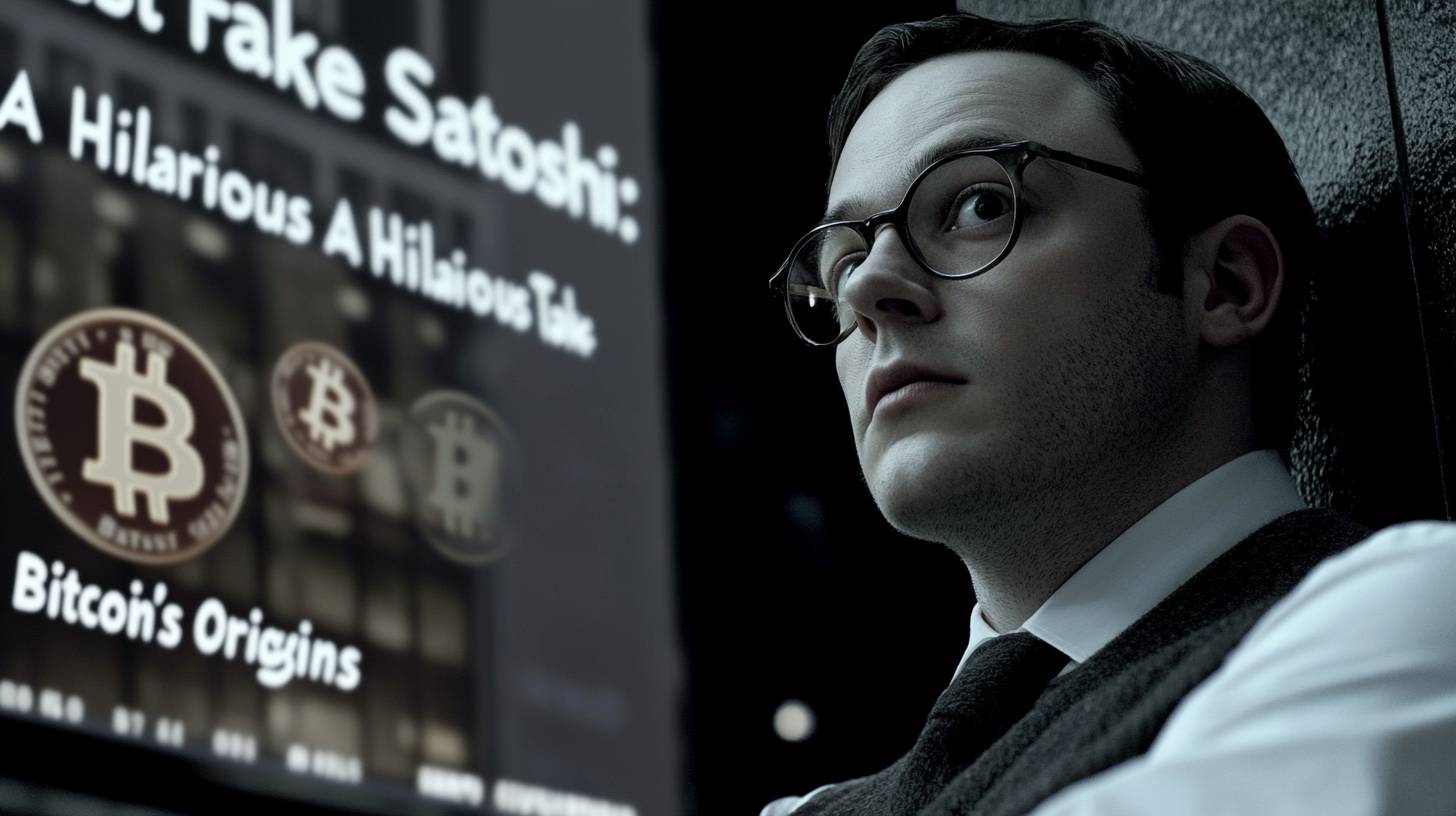
yet another fake Satoshi surfaces: Stephan Mollah’s declaration
Despite his bold claims, Mollah has yet to deliver any verifiable proof that he is Satoshi Nakamoto. His commitment to reveal additional information at a future date seems merely like a strategy to extend his time in the limelight. In truth, this assertion is just another in a long series of failed attempts to uncover the real identity of Bitcoin’s architect.
We find ourselves confronted with yet another assertion regarding Satoshi Nakamoto, this time from Stephan Mollah. Mollah, known for his outrageous claims, is once again in the limelight, stating that he is the mysterious inventor of Bitcoin. His recent act, coinciding with White Paper Day, has attracted media attention, even though there is a conspicuous absence of evidence to back his assertion.
Perhaps it’s time for the media to step back and reassess its strategy. After all, as Bitcoin Mechanic once noted, isn’t the essence of Bitcoin that it’s decentralized? That it doesn’t necessitate a figurehead or a governing authority? By relentlessly searching for Satoshi, the media is overlooking the larger picture. Bitcoin’s genuine strength lies in its capacity to operate without a singular point of control – and that’s a narrative worth conveying.
“I developed the Bitcoin technology, but I am not satisfied with it,” Mollah stated. “I possess evidence regarding all of that, but I am here just to make the announcement.”
Mollah’s behavior is nothing new. In 2021, he garnered headlines for suing Coinbase, claiming the cryptocurrency exchange had appropriated his company’s name. At that time, he also asserted that the name Satoshi Nakamoto was simply a pseudonym he had utilized all along. The lawsuit, similar to his current proclamation, was dismissed as unfounded, yet this hasn’t deterred Mollah from continuing to assert his narrative.
the media’s fixation on Satoshi Nakamoto
The media’s fixation on Satoshi Nakamoto is nothing short of insatiable. Every few months, it appears we are presented with yet another “disclosure” regarding the identity of the enigmatic Bitcoin creator, and with each instance, the press rushes to cover it as if it’s the story of the century. It almost seems that the media has a conditioned reaction to the name Satoshi Nakamoto – mention it, and you’re bound to see a surge of coverage, regardless of how tenuous the claim might be.
Yet, at what point does the media’s preoccupation with Satoshi Nakamoto become counterproductive? By granting coverage to every Tom, Dick, and Stephan claiming to be the inventor of Bitcoin, the media risks undermining the significance of the true Satoshi’s contributions. Instead of concentrating on the technology and its ramifications, the narrative shifts to personalities and dramatics – a sideshow that diverts attention from the core story.
But why? Why does the media persist in pursuing these wild goose chases, fully aware that the likelihood of any of these claims being genuine is negligible? Part of the reason surely stems from the sheer fascination surrounding Satoshi Nakamoto. The notion that the inventor of Bitcoin – a technology that has transformed finance and catalyzed an entire industry – could still be out there, lurking in obscurity, is captivating. It represents the quintessential mystery, and the media thrives on a good mystery.
However, there exists a more cynical explanation. Stories about Satoshi Nakamoto attract clicks. They create a buzz. In an age where media outlets are constantly competing for attention within an increasingly saturated digital arena, a headline about the “real” Satoshi is bound to attract views. The veracity of the claim is secondary – what counts is that people will engage, read, and disseminate. And in the world of online journalism, that’s often the crucial factor.
In Australia, where the cryptocurrency community is rapidly expanding, the fixation on Satoshi is equally prominent. Local news outlets have been swift to embrace the trend, reporting on every development in the ongoing saga. Whether it involves Craig Wright’s legal issues or the latest self-proclaimed Satoshi, the Australian media has shown similar eagerness to satisfy the public’s curiosity. With Bitcoin adoption escalating Down Under, it’s unsurprising that these narratives continue to captivate reader interest.
Source: bitcoinmagazine.com
During his latest public appearance, Mollah again failed to present any tangible evidence that he is indeed the originator of Bitcoin. Instead, he provided ambiguous statements along with assurances of forthcoming disclosures. He even resorted to displaying “increasingly easy to fabricate screenshots” as supposed proof, which only further undermined his claim.
Consider the BBC, for instance. Even after being burned by the Craig Wright incident in 2016, where Wright’s claim of being Satoshi was legally disproven, they still couldn’t help but report on Stephan Mollah’s latest performance. The temptation to be the outlet that finally unveils the Satoshi enigma appears too alluring to resist, even when the evidence is pathetically inadequate. And it’s not just the BBC – mainstream media outlets globally, from the US to Australia, seem to possess an endless appetite for these narratives.

